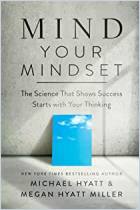Join getAbstract to access the summary!

Join getAbstract to access the summary!
Samantha Shad
The Write to Happiness
How to Write Stories to Change Your Brain and Your Life
Morgan James Publishing, 2020
What's inside?
Writing stories is great therapy because you’re finally speaking the same language as your brain.
Recommendation
Veteran screenwriter Samantha Shad finds that stories are fertile ground for working out problems because narrative is the essential language of the brain. She packs a lot into her short, readable two-part book – showing first how to “write to happiness,” and then giving the scientific reasons why storytelling works for your brain. By pairing a step-by-step guide on how to write fictitious, therapeutic stories with a survey of neuroscience and storytelling conventions, Shad shows with great empathy that making up stories is how humans compose and understand their lives. The brain is geared for stories, so writing one – yes, now you can – is a powerful way to understand and resolve life’s dilemmas.
Summary
About the Author
Former entertainment law attorney Samantha Shad has written more than 20 screenplays for major Hollywood studios, including Class Action. She is also the author of Write Through The Crisis: How To Make Good Use of Bad Times.





















Comment on this summary